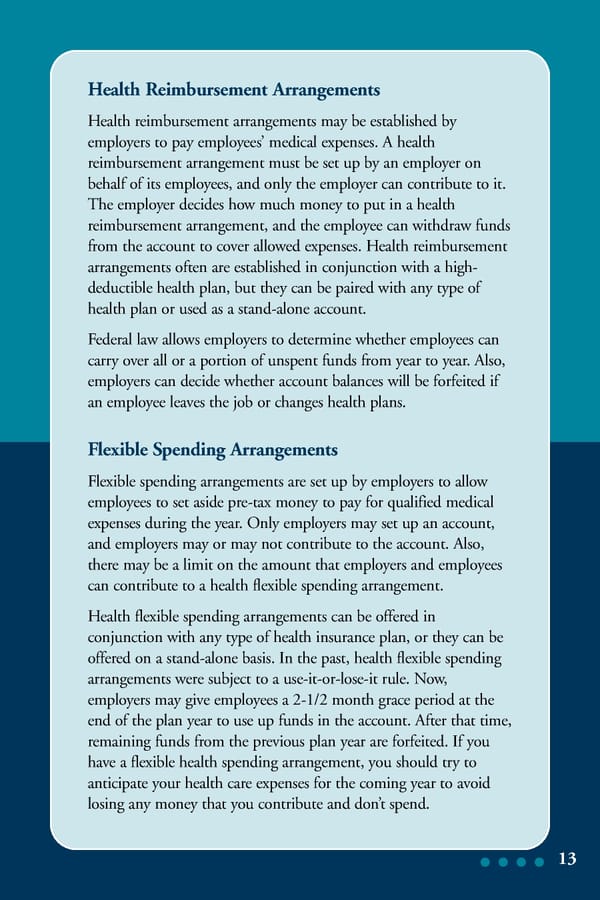Health Reimbursement Arrangements Health reimbursement arrangements may be established by employers to pay employees’ medical expenses. A health reimbursement arrangement must be set up by an employer on behalf of its employees, and only the employer can contribute to it. The employer decides how much money to put in a health reimbursement arrangement, and the employee can withdraw funds from the account to cover allowed expenses. Health reimbursement arrangements often are established in conjunction with a high- deductible health plan, but they can be paired with any type of health plan or used as a stand-alone account. Federal law allows employers to determine whether employees can carry over all or a portion of unspent funds from year to year. Also, employers can decide whether account balances will be forfeited if an employee leaves the job or changes health plans. Flexible Spending Arrangements Flexible spending arrangements are set up by employers to allow employees to set aside pre-tax money to pay for qualified medical expenses during the year. Only employers may set up an account, and employers may or may not contribute to the account. Also, there may be a limit on the amount that employers and employees can contribute to a health flexible spending arrangement. Health flexible spending arrangements can be offered in conjunction with any type of health insurance plan, or they can be offered on a stand-alone basis. In the past, health flexible spending arrangements were subject to a use-it-or-lose-it rule. Now, employers may give employees a 2-1/2 month grace period at the end of the plan year to use up funds in the account. After that time, remaining funds from the previous plan year are forfeited. If you have a flexible health spending arrangement, you should try to anticipate your health care expenses for the coming year to avoid losing any money that you contribute and don’t spend. 13
 Health Insurance Q&A Page 16 Page 18
Health Insurance Q&A Page 16 Page 18